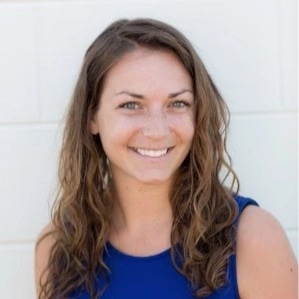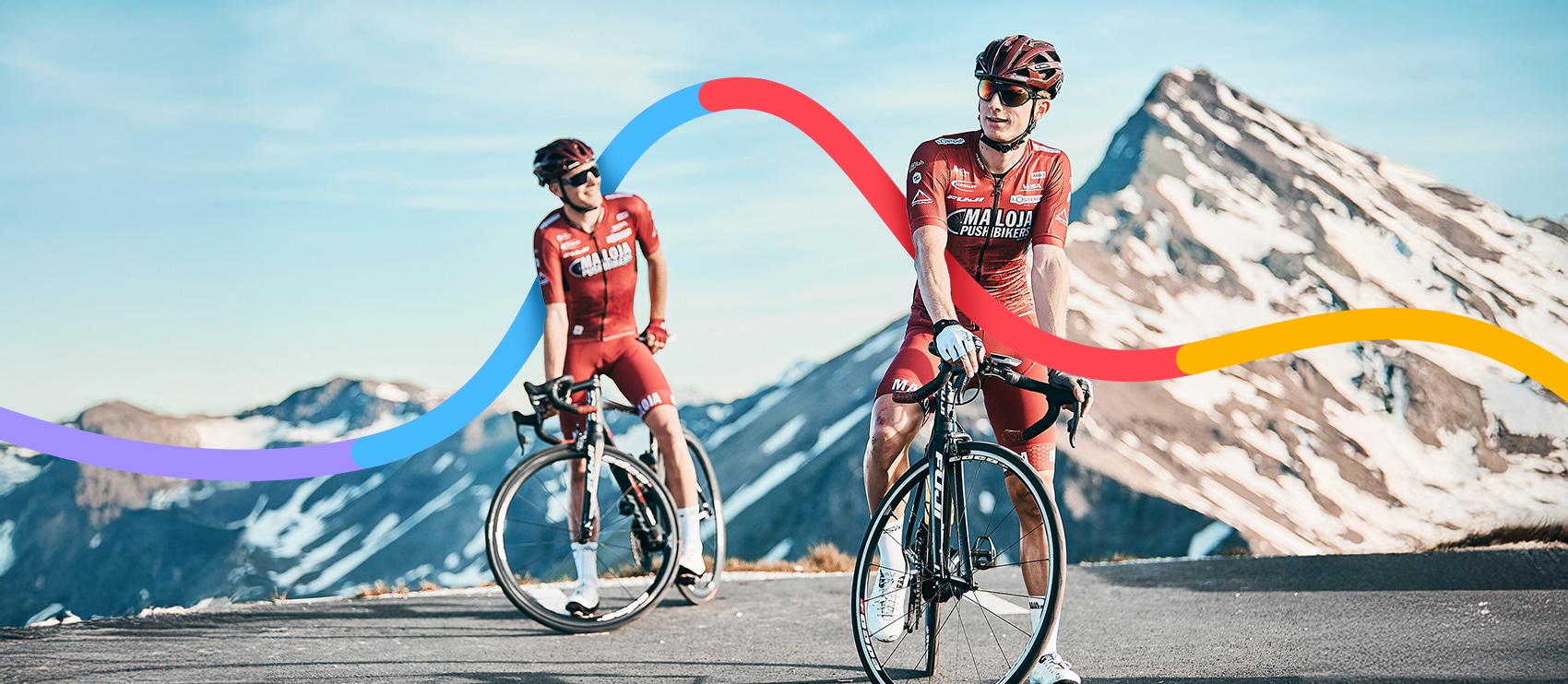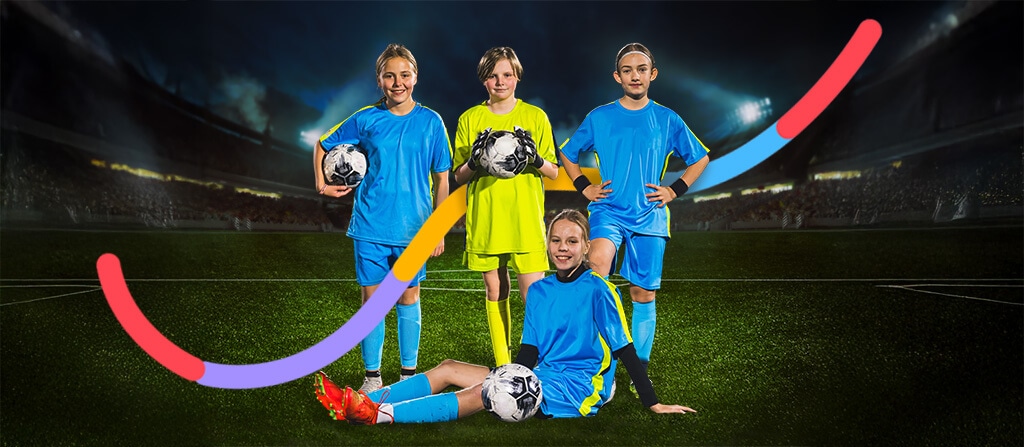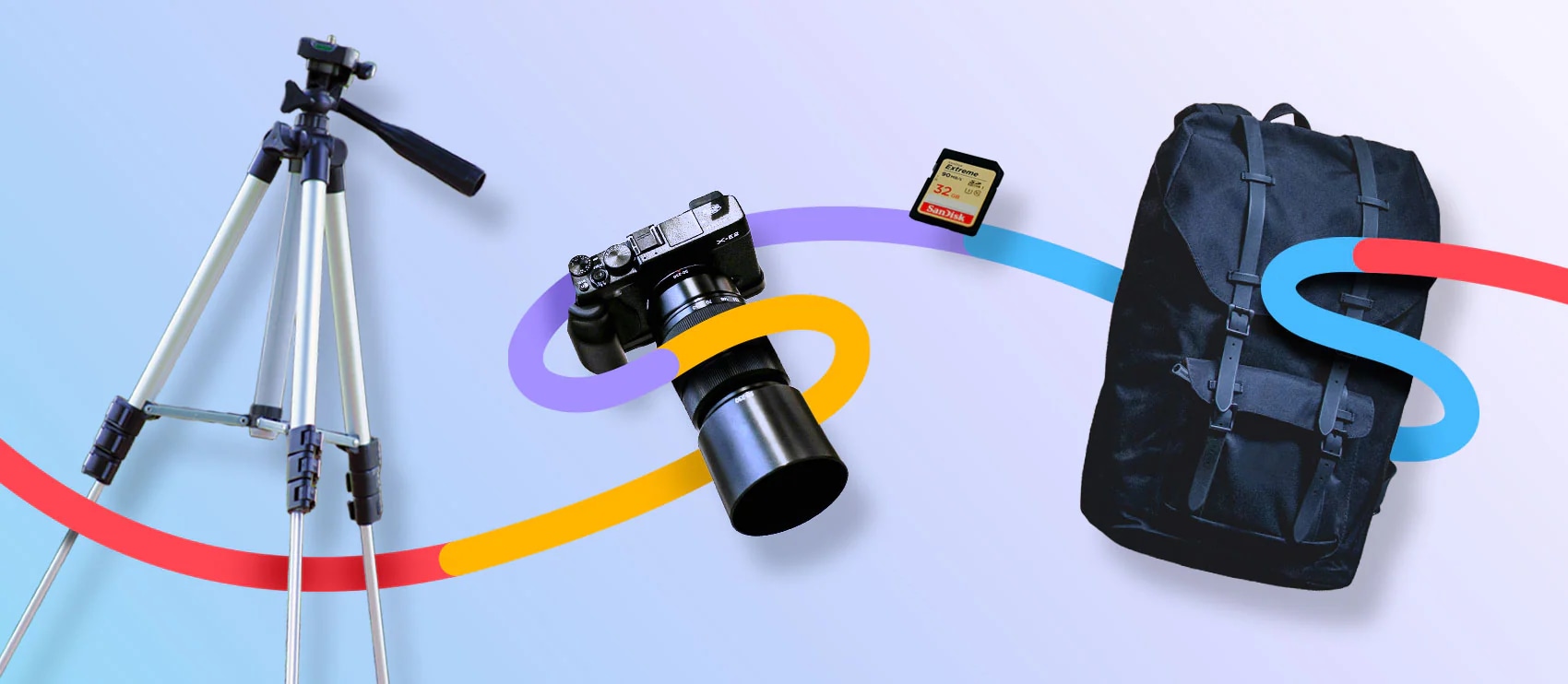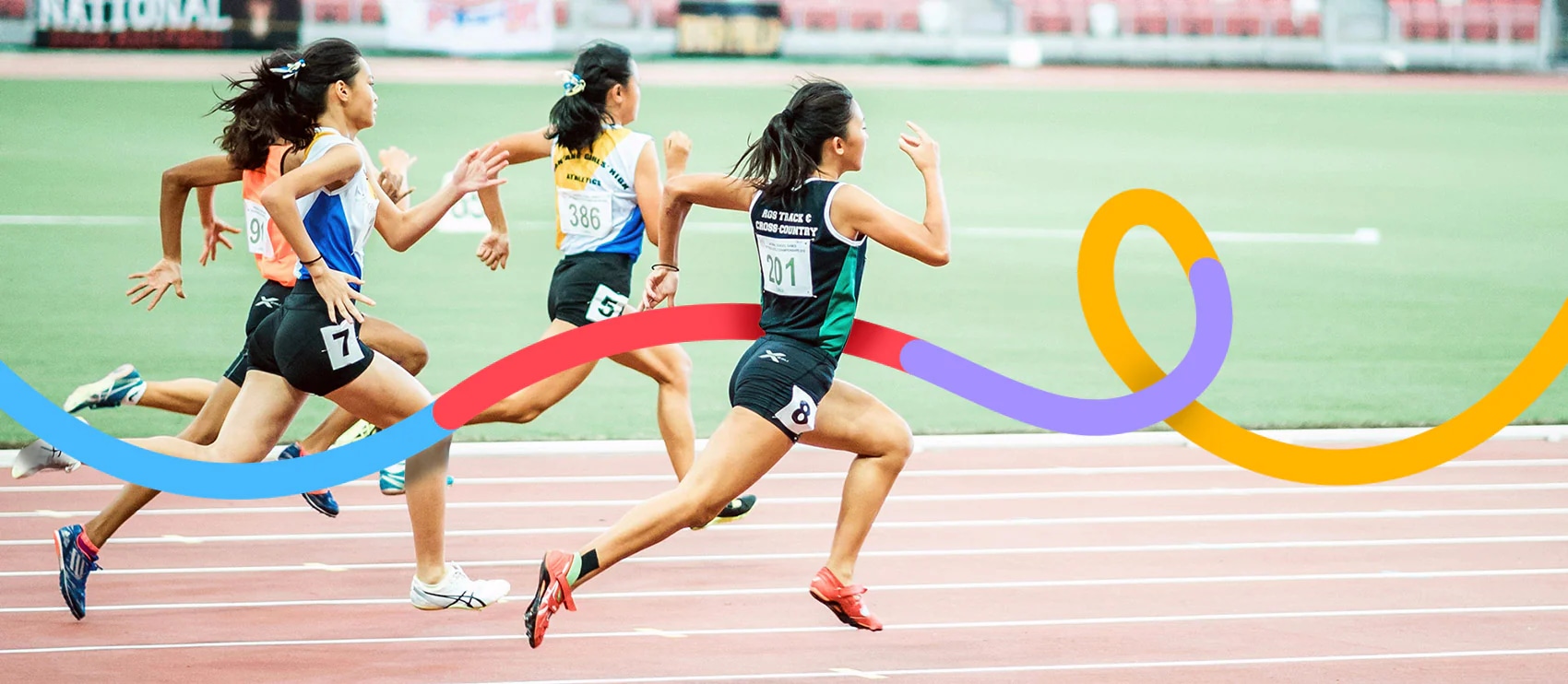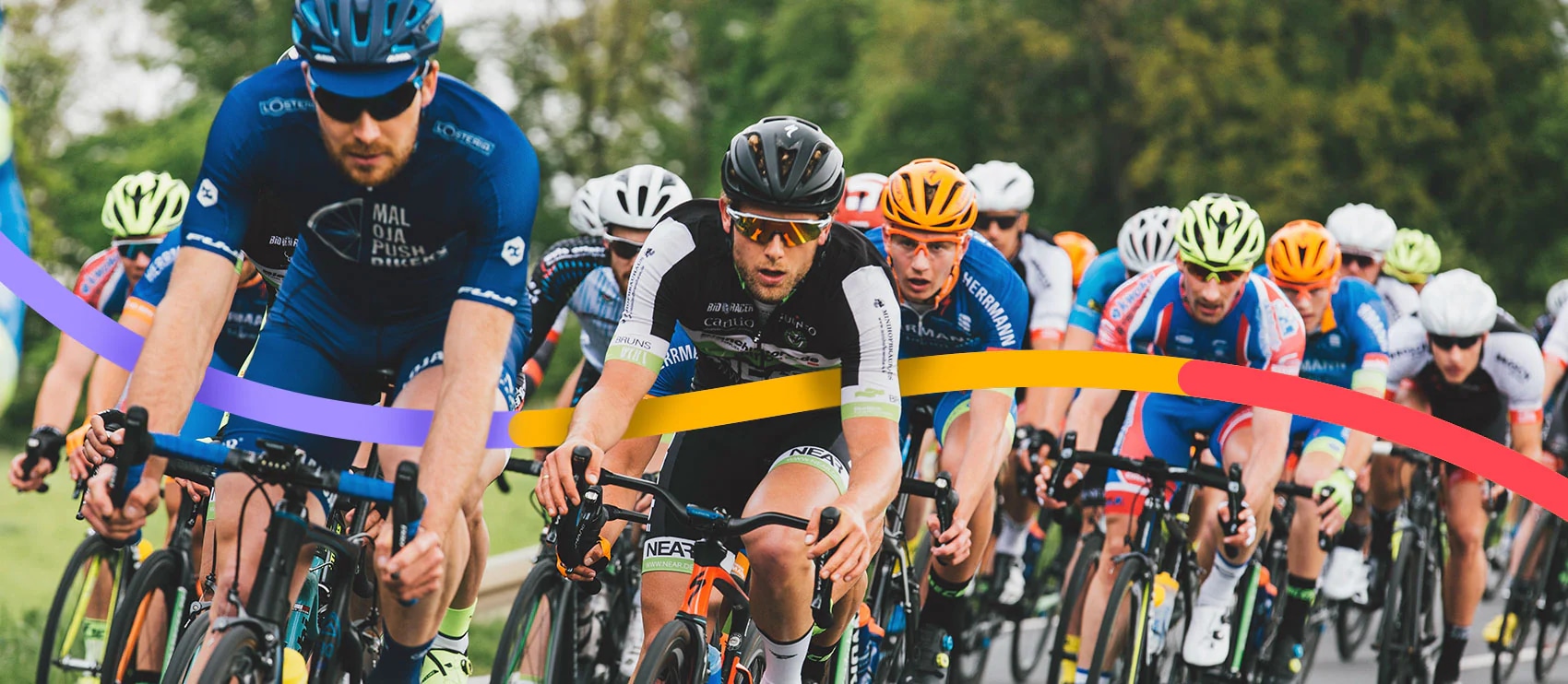What Is Portrait Photography? Types and Examples (2025)
A portrait is a work of art.
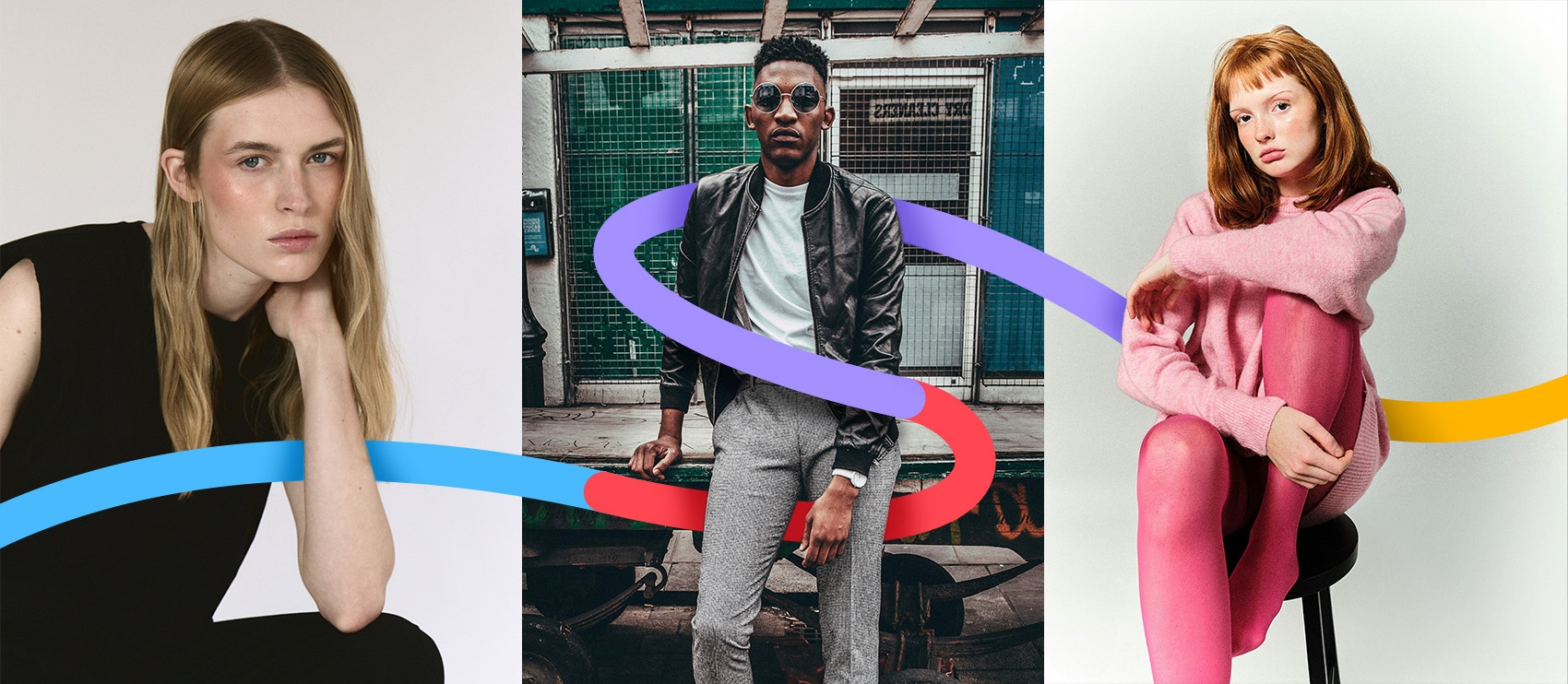
Portrait photography is more than just taking pictures of people—it’s an art form that captures the personality, mood, and essence of a subject. Whether it’s a professional headshot or a creative environmental portrait, this style of photography focuses on telling a story through expressions, lighting, and composition.
We know how much goes into creating stunning portraits, which is why we’re here to help you polish your portraits. From retouching skin tones to removing distractions in the background, our 24/7 virtual photo editing studio edits every portrait to look its absolute best.
Let’s learn more about portrait photography and what goes into creating amazing portraits.
What is portrait photography?
The portrait photography definition is that it’s a style of photography focused on capturing the personality, mood, and essence of a person or group of people. Portraits are usually close-up shots that highlight the subject’s face, although full-body portraits and environmental portraits—showing the subject in a meaningful setting—are also common.
The main purpose is to convey the subject’s individuality through expressions, poses, backgrounds, lighting, and sometimes even props.
What’s the difference between portrait photography and headshot photography?
Portrait photography and headshot photography both focus on capturing people, but they have distinct purposes and styles.
Headshots are tightly framed images that center on the subject, typically with a blurred or neutral background. They’re usually straightforward, clean, and simple, often used in professional settings to represent a person’s image on business platforms, resumes, and social media profiles like LinkedIn.
Portraits, on the other hand, are broader in scope and more flexible in creative approach. They capture not only the appearance but also the personality and mood of the subject, often using varied poses, expressions, and settings. Portraits can be taken in more contextual or dramatic backgrounds, offering a storytelling element. The style can range from formal to artistic.
Unlike headshots, portraits are often used for personal expression, editorial work, or creative marketing materials, allowing for more freedom in capturing the individuality and character of the person.
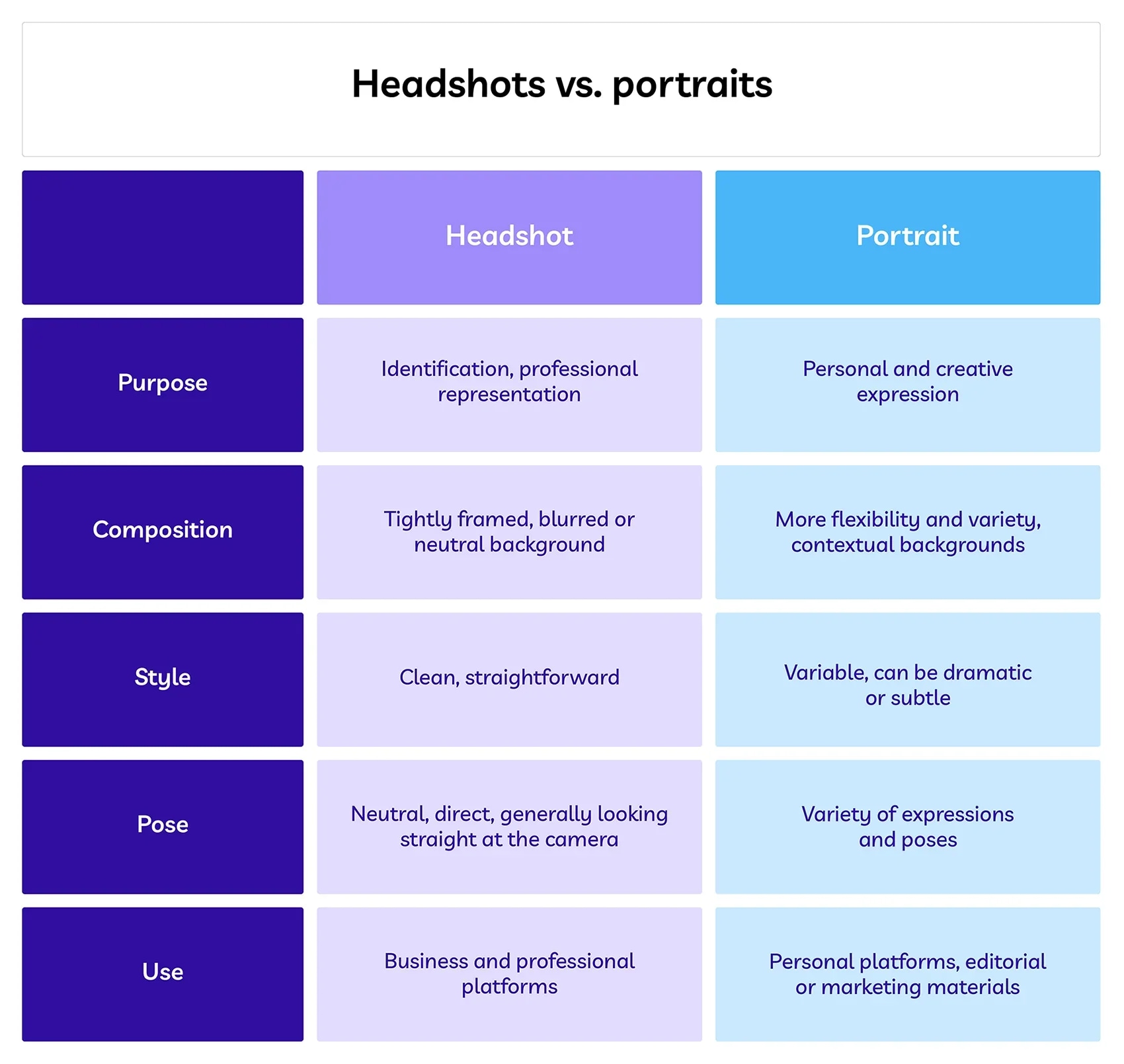
That being said, headshots are trending to showcase more personality, even for professional use. So we’re seeing lots of portrait-type approaches being used in professional headshots—including in the photos our clients ask us to retouch.
Types of portrait photography
Traditional portraits
Traditional portraits are classic, posed shots where the subject usually looks directly at the camera. Traditional portraits often have controlled lighting and a neutral background, focusing on the subject’s face and upper body. They’re commonly used for formal occasions like school photos, corporate headshots, or family pictures.
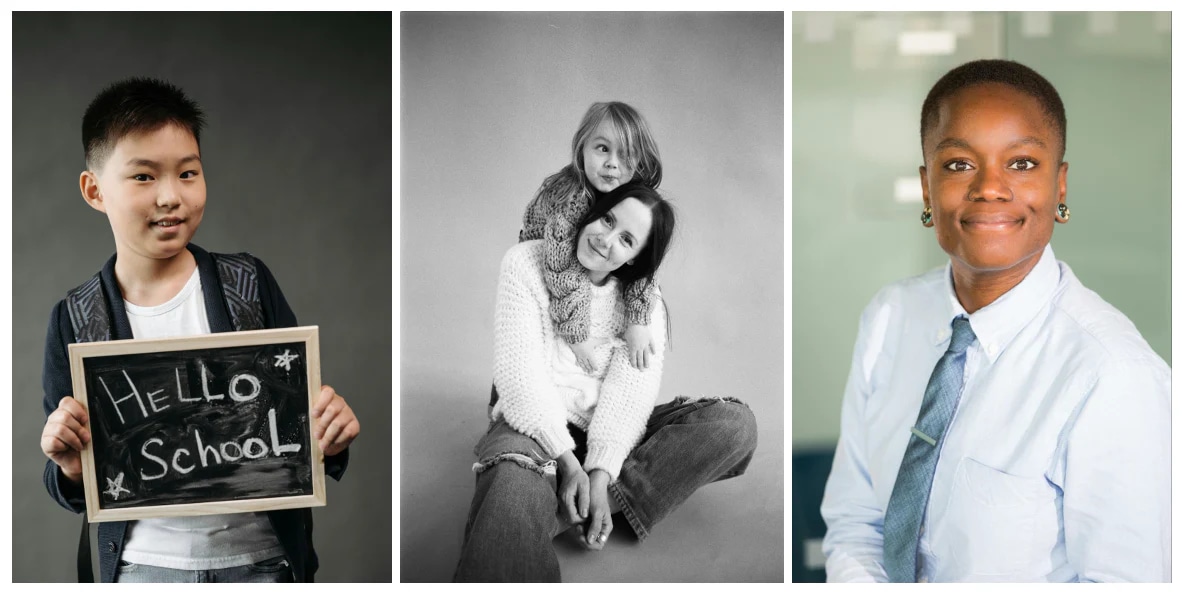
Environmental portraits
Environmental portraits capture the subject in a setting that provides context about their personality, interests, or occupation—like an artist in their studio or a chef in the kitchen. The background is an essential part of the composition, as it helps tell a story about the person.Taken in a location meaningful to the subject, like a workplace, studio, or natural setting, to add context.

Candid portrait photography
Candid or lifestyle portraits capture people in natural, unposed moments, often appearing they don’t realize they’re being photographed. Candid photos might show people in their everyday environments, participating in ordinary activities, like a family playing at home or friends sharing a meal.
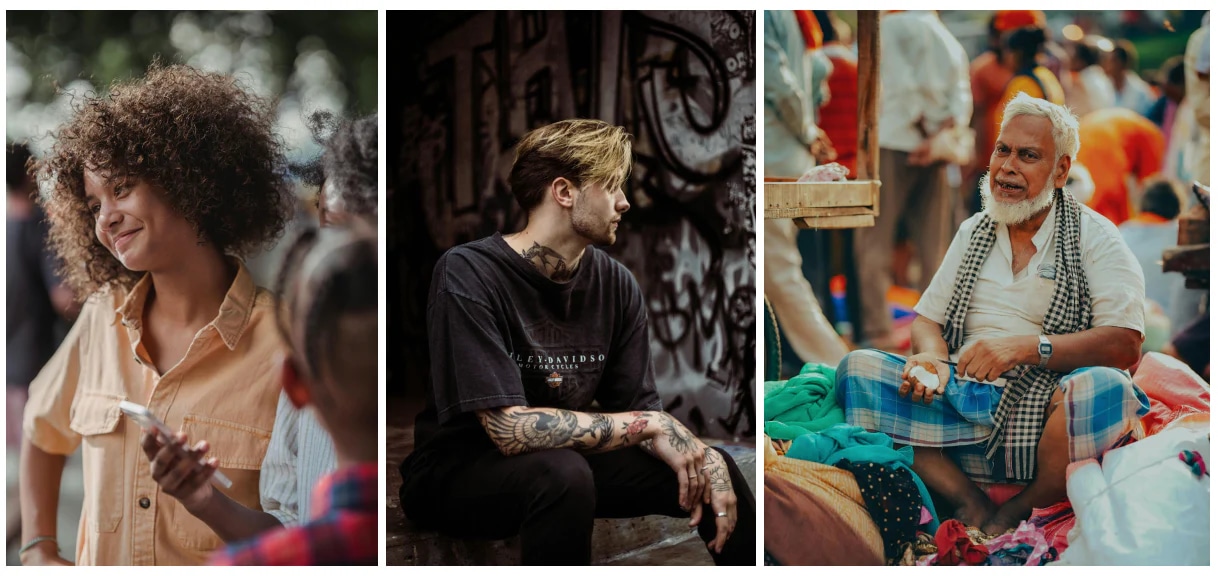
The emphasis is on storytelling and showcasing real-life moments in a natural and relaxed manner. This style aims to show authentic emotions and genuine expressions, commonly used in street photography or lifestyle sessions.
Creative and fine art portraits
Creative portraits make use of artistic techniques like dramatic lighting, unusual angles, or unique styling to add a creative twist.
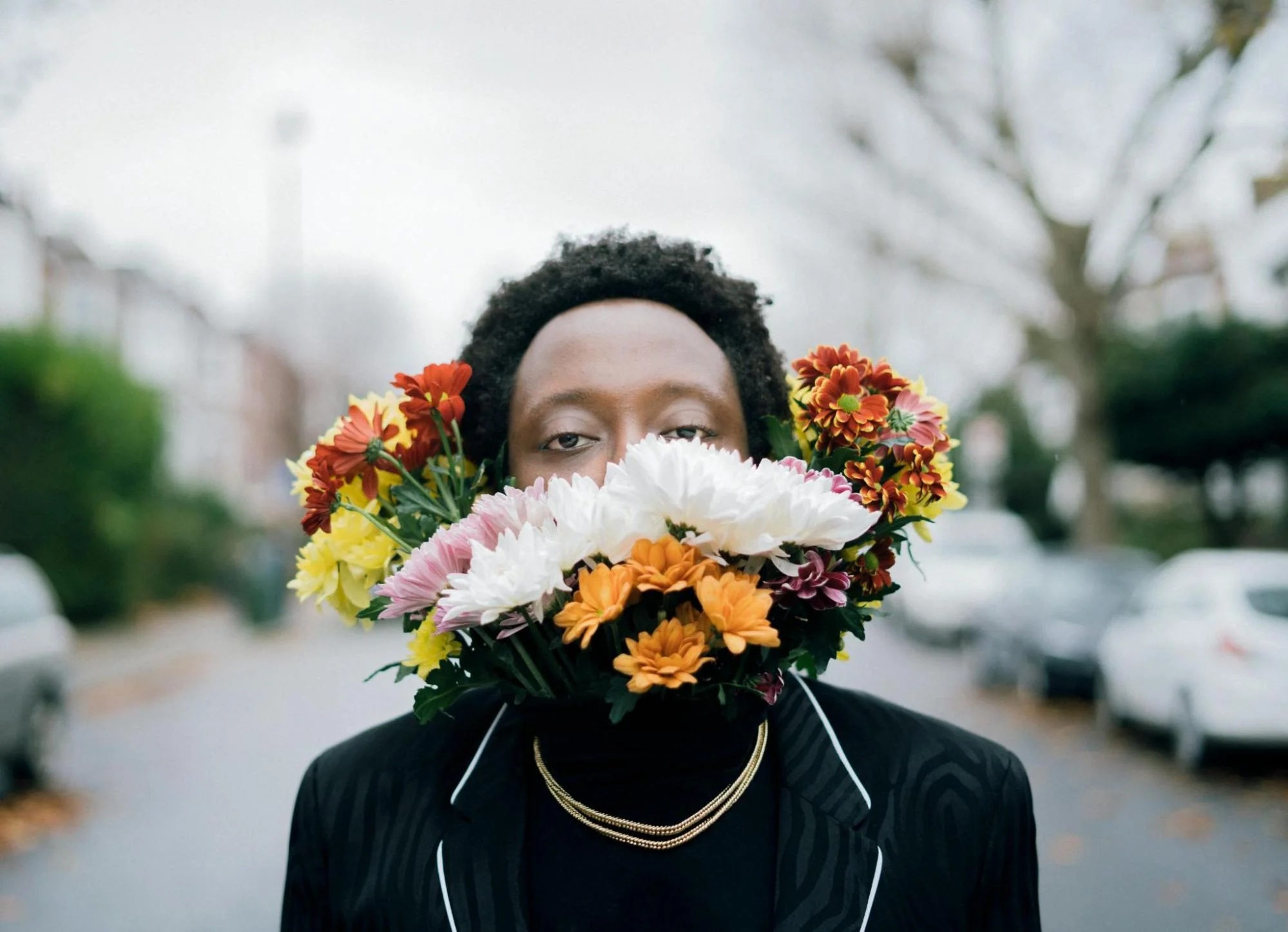
Under the umbrella of creative portrait photography, you have fine art portrait photography—highly stylized and artistic, with a focus on creative expression rather than realism. Photographers use unique lighting, props, and post-processing techniques to create images that often resemble artwork. The goal is to evoke emotion and convey deeper themes or concepts.
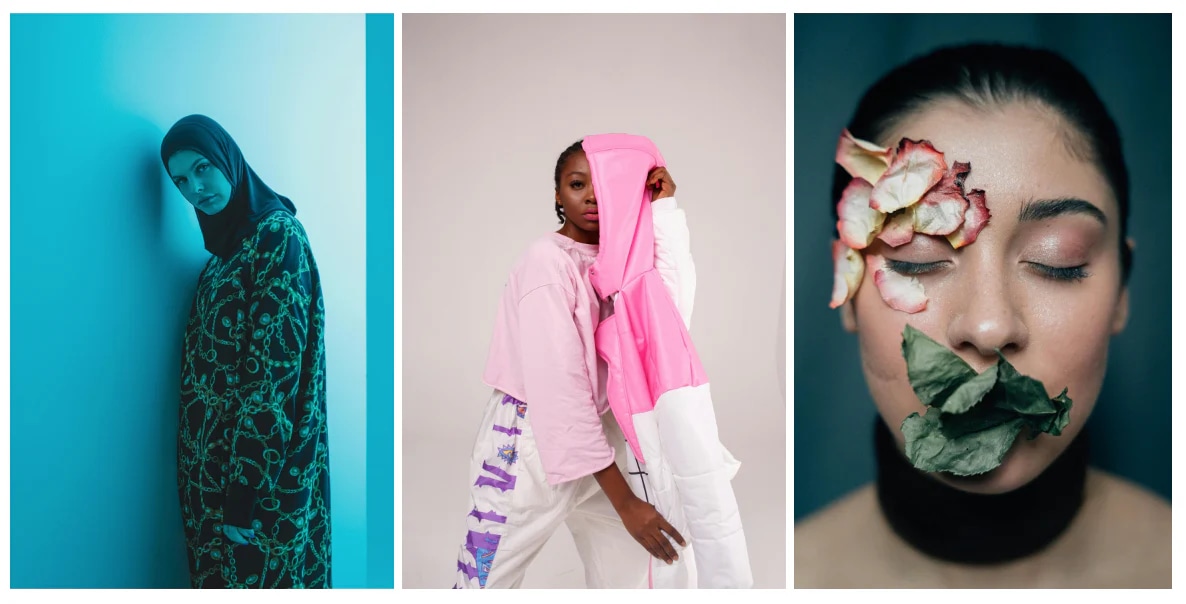
Conceptual portraits use symbols, props, and settings to represent an idea or theme, often surreal or abstract. They make viewers think or interpret a message and are commonly found in art galleries or editorial spreads.
Surreal portraits involve creative techniques such as unusual lighting, Photoshop manipulation, or abstract concepts. They create a dreamlike or fantastical scene, going beyond reality to express a specific vision.
Glamor and beauty portraits
Focused on making the subject look their best, glamor portraits often involve professional makeup, styling, and sometimes retouching to enhance features. These portraits are typically bold, polished, and can be seen in fashion, beauty, or modeling portfolios.
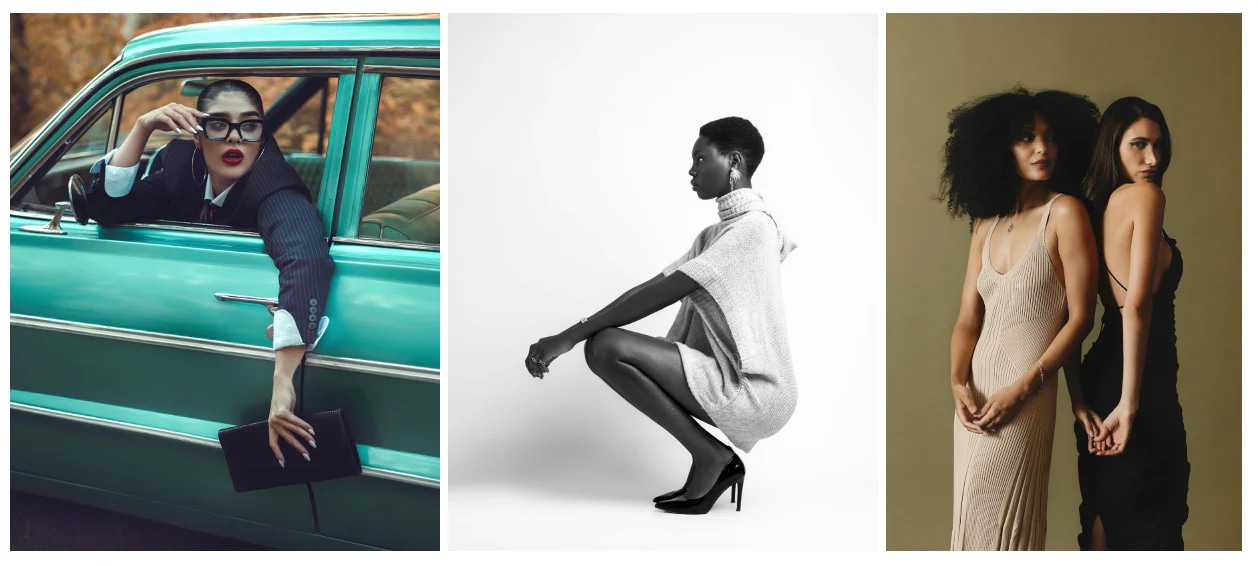
Self-portraits
A self-portrait is taken by the photographer of themselves, often used as a form of self-expression or exploration. It can range from simple selfies to highly stylized, planned shots that tell a personal story.
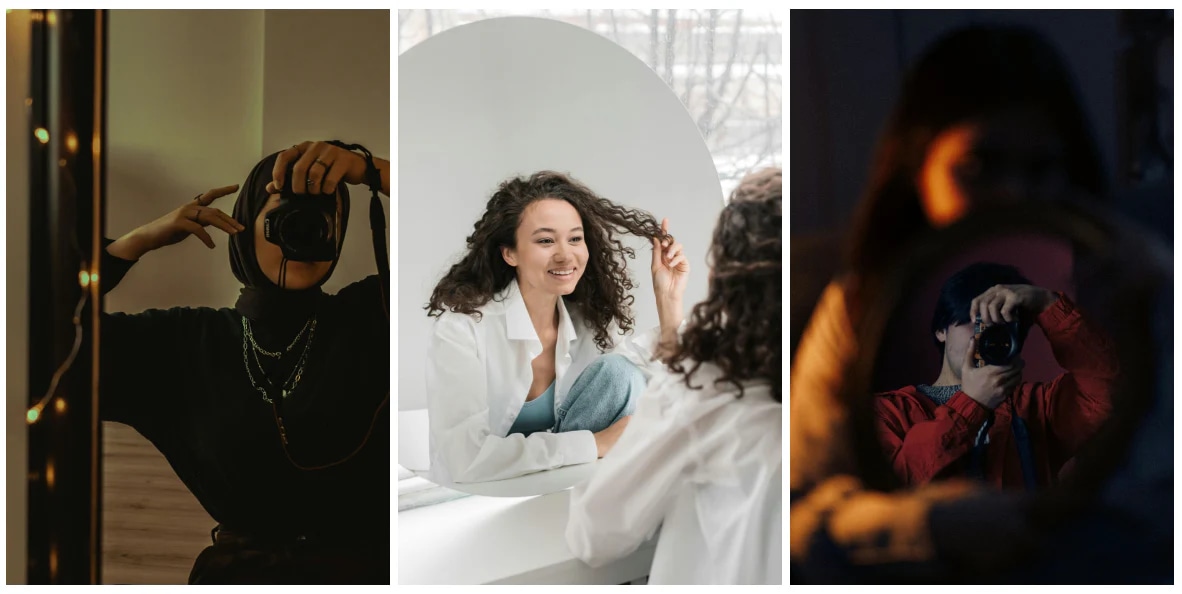
Portrait photography tips and best practices
Portrait photography really boils down to three core elements: lighting, composition, and poses. Let’s look at each:
Lighting
The ideal lighting setup for most styles of photography is natural light—whether you’re shooting indoors or outside. If shooting inside, look for places with access to lots of natural window light.
However, sometimes you’re shooting portraits in a studio setting without access to natural daylight. In this case, you’ll need to use studio lighting equipment.
A typical portrait lighting setup might include a three-point lighting setup with a key light, fill light, and hair light. However, portrait photographers can adjust this setup depending on the style and mood they want to create.
For instance, Rembrandt lighting involves positioning the key light to one side to cast a triangular shadow under the opposite eye, while butterfly lighting places the key light directly above and in front of the subject to create soft shadows under the nose and cheekbones.
Let’s get into the details:
- Main light (key light): Your primary light source, typically placed at a 45-degree angle from the subject, above and to the side of the camera. It defines the overall lighting pattern and provides the strongest illumination, creating depth and dimension on the subject’s face. You might use softboxes, umbrella lights, or beauty dishes.
- Fill light: The fill light reduces shadows created by the key light, providing balance. It’s usually placed on the opposite side of the key light, at a lower intensity. You can use reflectors or a second light source as fill light. It’s usually softer and positioned closer to the camera axis to keep the subject’s face evenly lit without eliminating all shadows, which would flatten the image.
- Background light: This illuminates the backdrop behind the subject, separating them from the background and adding depth to the image. You can put it behind the subject, aimed at the background. This light can help create a gradient effect or highlight specific areas of the background for a more polished look.
- Hair light or rim light: The hair or rim light helps separate the subject from the background, particularly if they’re wearing dark clothing or have dark hair against a dark background. Place this light above and behind the subject to add a slight glow to their hair and shoulders. Often, a small softbox or strip light is used to create a subtle, even light around the edges of the subject.
- Reflectors: Reflectors bounce light onto the subject, acting as additional fill without needing an extra light source. They’re typically placed below the subject’s face or on the opposite side of the key light to reflect light back onto areas where shadows might be too harsh. Reflectors come in various colors (white, silver, and gold) to create different effects: white for soft fill, silver for a brighter bounce, and gold for a warmer tone.
- Modifiers: Light modifiers like softboxes, umbrella diffusers, grids, and barn doors help shape and control the quality of the light. Softboxes and umbrellas soften the light, creating a more flattering effect on the subject’s face. Grids and barn doors can be attached to the lights to direct the light and prevent unwanted spill onto the background.
- Light stands and c-stands: Stands hold the lights in place and allow for positioning flexibility. C-stands are particularly useful for heavier lighting equipment or boom arms, as they provide added stability.
- Triggers and sync cords: Wireless triggers or sync cords connect the camera with the lights, allowing the portrait photographer to control the timing of the flashes.
This is essential for coordinating all lights to fire simultaneously with the camera shutter.
Composition
In portrait photography, composition is critical. The right composition allows you to create visually engaging and balanced images that highlight the subject’s features, expressions, and personality.
One popular approach in portrait composition is using a shallow depth of field, which keeps the subject sharply in focus while blurring the background. This technique isolates the subject, drawing the viewer’s eye directly to their face or specific details, and is particularly effective for creating intimate, focused portraits.
Beginners might also use the rule of thirds as a guiding principle. Essentially, the subject is placed slightly off-center, making the image more dynamic and visually interesting. Using leading lines or framing elements—like doorways, windows, or trees—can also help direct attention toward the subject. Considering the placement of the eyes in the frame is important—positioning them along the top third line tends to create a natural focal point.
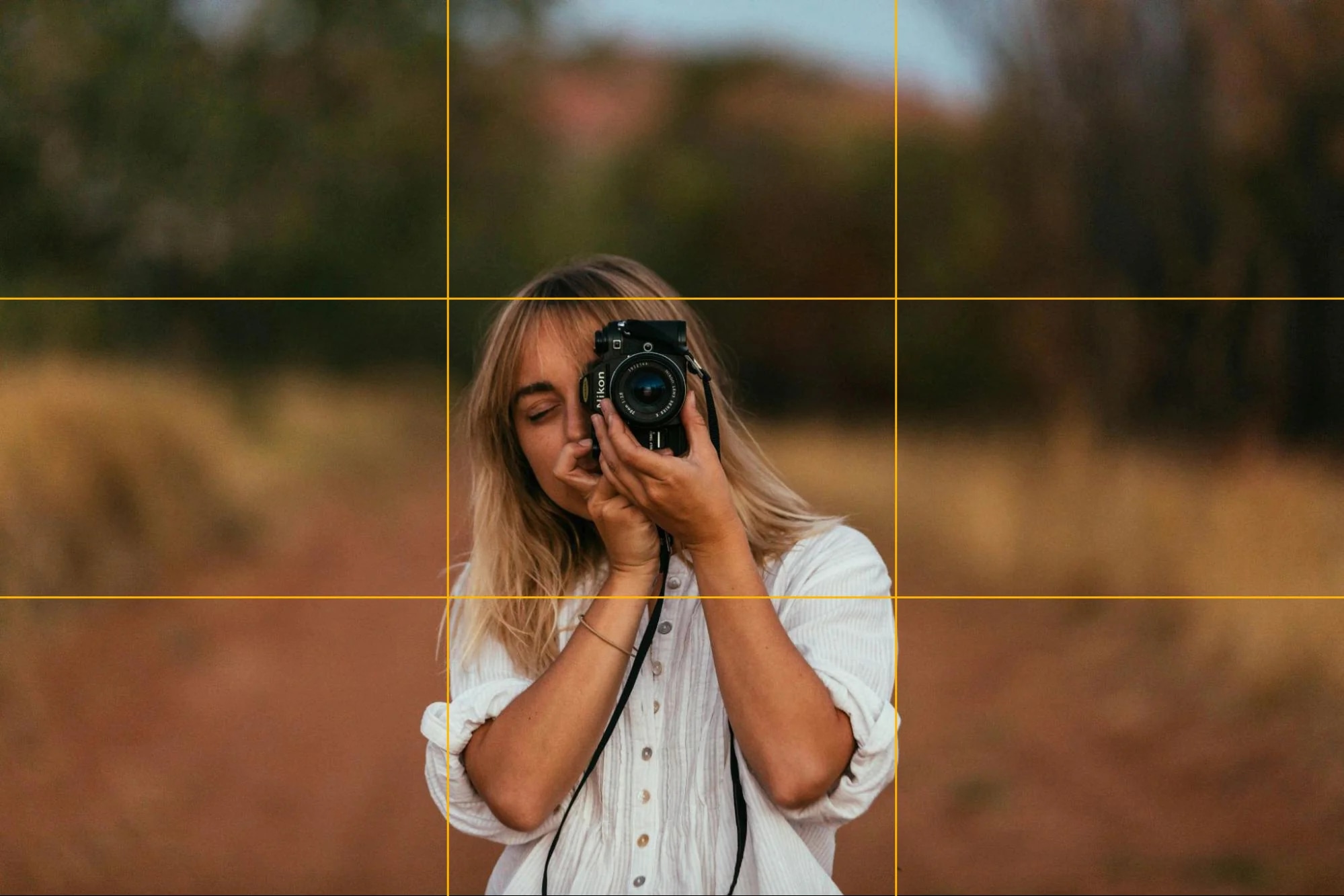
In environmental portraits, the background plays an integral role in the composition—it adds context about the subject’s life, profession, or interests.
Portrait photographers often use elements in the surroundings to complement the subject, enhancing the story within the frame. Experimenting with different angles—like shooting slightly above or below eye level—can also add variety and make the portrait more visually compelling.
Poses
Posing is another critical element in portrait photography. Effective poses look natural, relaxed, and help the subject appear comfortable in front of the camera.
A common starting point for portrait poses is a relaxed posture, where the subject slightly shifts their weight onto one foot, helping create a more dynamic stance.
The angle of the head can also make a big difference—turning the face slightly away from the camera often adds dimension, while a slight tilt can convey friendliness or approachability.
For a more formal look, the subject might sit or stand straight with a dignified posture, while a casual pose might involve leaning against a wall or sitting on the floor.
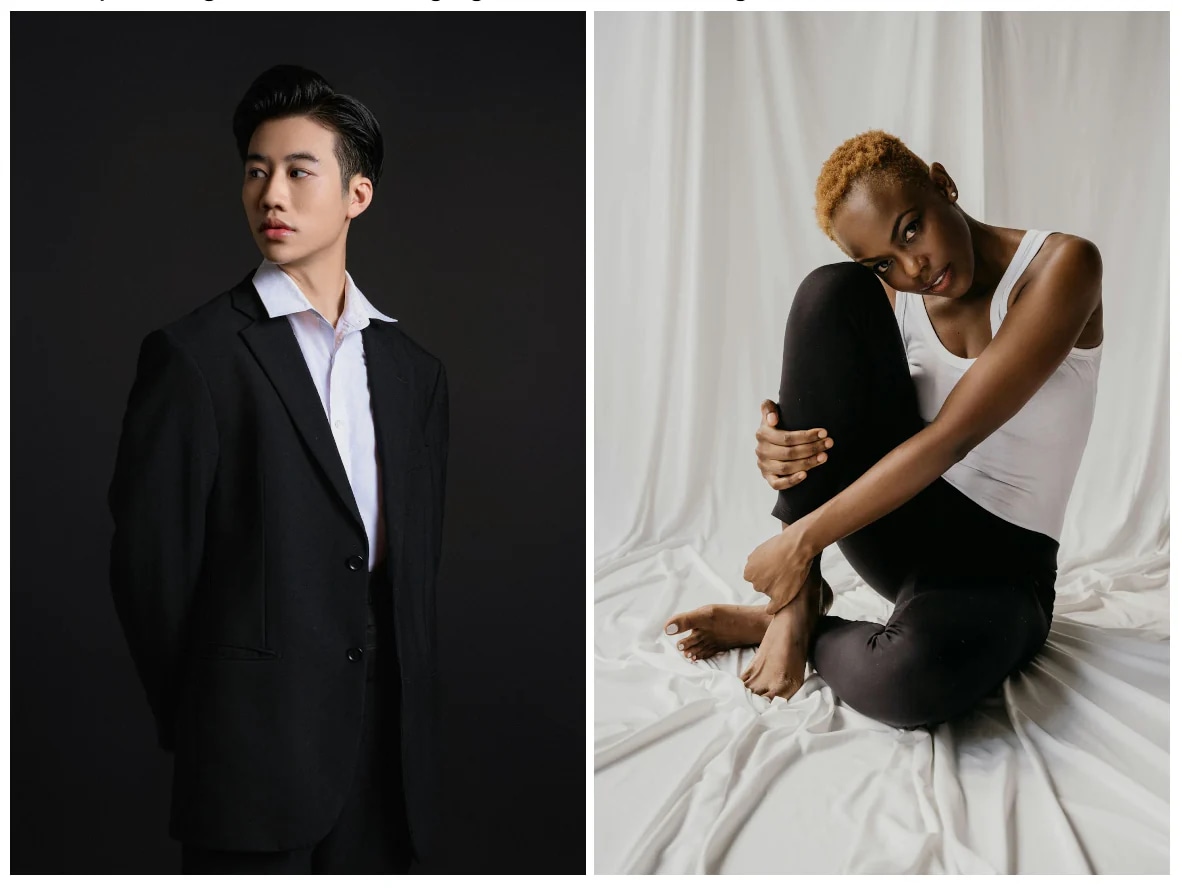
The hands can also be expressive, so guiding the subject to position their hands naturally—resting on their lap, crossed, or lightly touching their face—can add sophistication or playfulness.
For candid or lifestyle portraits, photographers may encourage the subject to move around, talk, or even engage in a familiar activity, creating an authentic pose that feels spontaneous. Posing tips like “chin down” or “lean forward” can help avoid unflattering angles and make the subject look more engaged.
For group portraits, arranging people at different heights and angles can create visual interest and help each person stand out while maintaining balance within the frame.
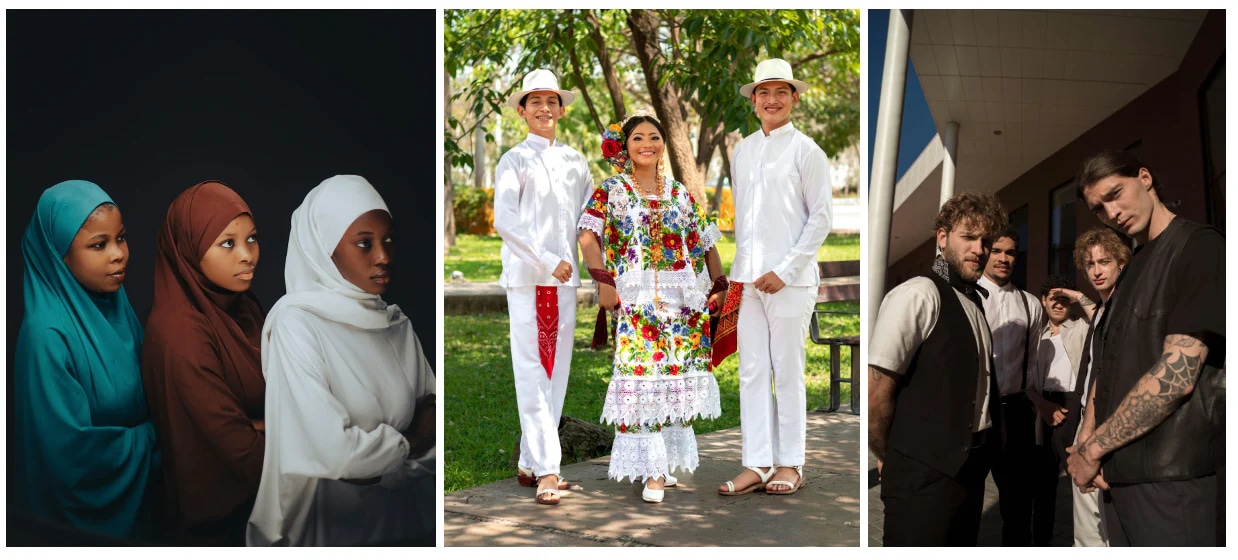
Portrait photo sizes
Size-wise, portrait photos are taller than they are wide. But this is technically speaking. You’ll find lots of portraits out there which are shot in landscape—wider than they are tall—or square (popularized by Instagram).
A traditional portrait photo size is 1080 x 1350 pixels. Printed portraits may be the following:
- 4×6 inches: small prints, standard
- 5×7 inches: slightly larger, often used for portraits and group photos
- 8×10 inches: popular for family portraits or school photos
- 11×14 inches: focal point portraits
- 16×20 inches: high-impact, dramatic
Now it’s time to edit your portraits
Ready to take your portrait photos up a notch? Even if your photos are gorgeous, they’re likely to need some edits. You can fumble in photo editing software or outsource it to the pros who already know their way around in Photoshop.
Whether it’s smoothing out a blemish or getting rid of a pimple, you can outsource your tedious editing tasks to Path, your 24/7 virtual photo editing studio.
Polish up your product shots with pro retouching from 79¢ per image

Portrait photography FAQs
How do you take portrait photos?
Taking portrait photos involves several steps to capture the essence, personality, and mood of your subject:
- Set up your lighting—natural light is ideal, but studio lighting works well for controlled environments.
- Choose a background that complements the subject.
- Set your camera to a wide aperture (low f-stop, like f/1.8 or f/2.8) to create a shallow depth of field, which keeps the subject in focus while blurring the background.
- Direct the subject into comfortable poses that reflect their personality. Encourage them to relax, move naturally, and express a range of emotions for variety.
- Pay attention to composition techniques, like the rule of thirds, framing, and leading lines, to create a balanced and visually interesting shot.
- Experiment with angles, close-ups, and different focal lengths to add depth and impact.
- Capture multiple shots to ensure you have options to choose from in post-processing, where you can make further adjustments to enhance the final image.
What makes a photography portrait?
A photography portrait is an image that captures more than just the physical appearance of a person—it reveals their personality, mood, and character. Portraits focus on the subject’s face and expressions, but can include other elements—like posture, body language, and even background settings—that add layers to the storytelling. The goal is to present a deeper, more personal view of the subject, often achieved by carefully choosing lighting, poses, and composition. Portraits can be formal or candid, artistic or straightforward, but they always center around conveying something unique about the individual being photographed.
What defines portrait mode photography?
Portrait mode photography is a technique used to focus sharply on the subject while blurring the background, creating a shallow depth of field effect. Many digital cameras and smartphones have a “Portrait Mode” setting that automatically adjusts aperture, focus, and depth of field to highlight the subject and create a professional look. Portrait mode isolates the subject from the background, making them the central focus of the image, which is especially effective for close-up shots of faces or upper bodies. This mode is popular for achieving the look of professional portraits with minimal manual adjustments.
What does a portrait photographer do?
A portrait photographer captures images that highlight the personality, mood, and essence of a person or group. They plan and set up shoots, scout locations, control lighting and backgrounds, and direct the subject to achieve flattering and expressive poses. They work with both technical skills (like understanding lighting setups, camera settings, and composition) and people skills, building rapport with the subject to get natural, authentic shots. A portrait photographer may also handle editing and retouching photos. Portrait photographers can work in various settings, including studios, on-location, or in natural environments.
What classifies a portrait photo?
A portrait photo is classified by its focus on capturing the likeness, personality, and mood of a person or group, often through close-up shots that emphasize the face and expressions. Portraits can include a range of styles—from formal posed shots to candid or creative approaches—but they generally center on the subject as the main focal point. Other characteristics of a portrait photo include attention to lighting, composition, and background, as well as a thoughtful use of depth of field to keep the subject sharp while softening the surroundings. The intent behind a portrait photo is usually to reveal something about the individual, whether it’s a professional headshot, a family portrait, or an artistic exploration of personality.
Polish up your product shots with pro retouching from 79¢ per image


